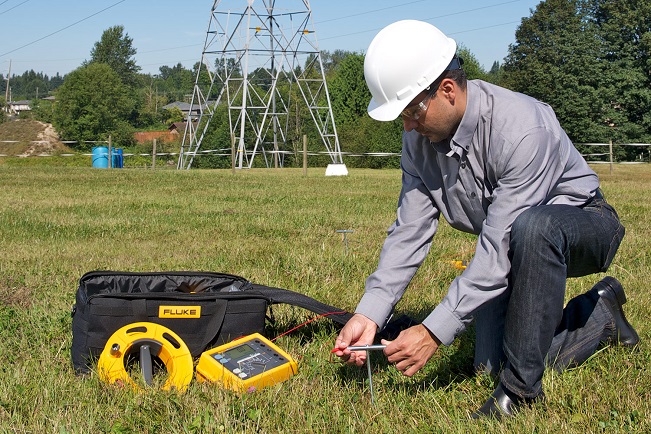When installing extensive grounding systems, soil resistivity testing is one of the most important things to do in order to get the most economical installation. Soil resistivity testing is performed by ground resistance testers who have three basic purposes – to gather data and help the user identify depth to bedrock and more locations among other geological phenomena, to discover the corrosion activity of the area and therefore determine the protective treatment to be used around it, and to discover the resistivity of the soil, which is the main purpose.
As aforementioned, in order to perform all of this, you need a soil resistivity meter, also known as ground resistance tester. Most soil resistivity meter models use four electrodes, four spools of wire and four auxiliary electrodes. Once you have the equipment, you can test the soil resistivity using one of two methods – the Wenner and the Schlumberger method. The Wenner method is the more commonly used one when installing grounding electrode systems, while the Schlumberger method is the more practical one for performing geological surveys, where the resistivity needs to be tested at several depths.

In both methods, the results are presented by the Greek letter P and are expressed in Ohm-meters/ centimeters, which represent the resistance value of the soil expressed in cubic meters. Regardless of which method you use, some of the challenges you’ll stumble upon include factors that impact soil resistivity. Soil can be made up of different matters, all of which can impact its resistivity. For instance, soils consisting of loam, shale or ashes have lower soil resistivity, while soils made out of sand, stone, and gravel have the highest resistivity.
Furthermore, moisture content, salts and temperature also impact resistivity. Soil with 10% moisture will have 5 times less soil resistivity than soil that contains 2.5% moisture. Similarly, soil at room temperature will have 4 times less resistivity than soil at 32°C. That being said, the time of year that you’re performing the test in will play a huge role.
Lastly, salt content significantly impacts the results. A single percent of salt can reduce soil sensitivity by a large margin. That being said, performing a visual analysis of the site can give you a good idea as to whether you can get decent results with a single ground rod, or you’ll need several of them to get the most accurate results. The conditions should always be written down together with the results.
























